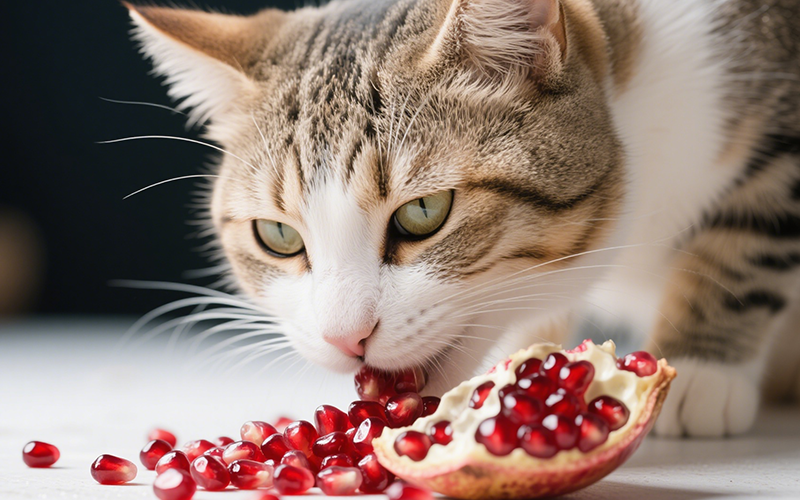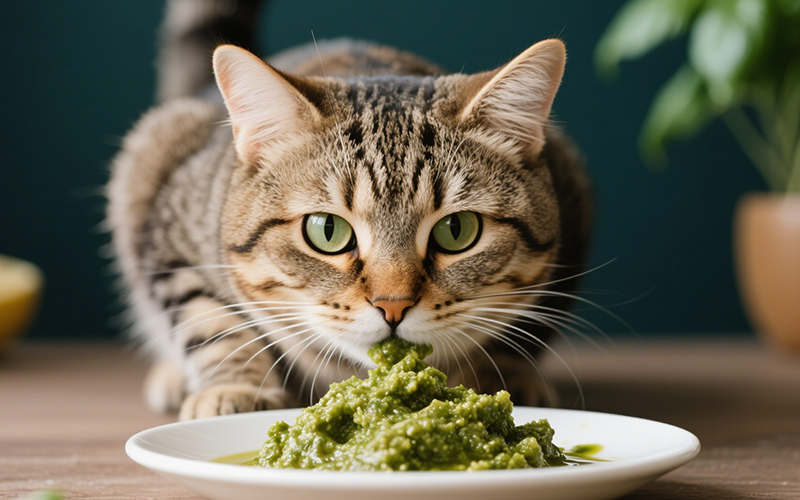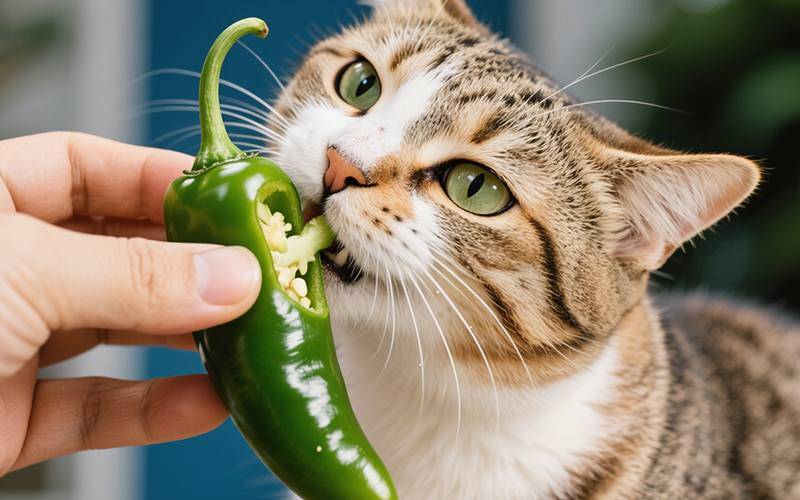Quinoa for Kitties? Unraveling the Safety of This Trendy Grain for Cats
- 26 Apr 2025 09:32
Quinoa, lauded as a nutritional powerhouse in human diets, has surged in popularity over recent years. This "ancient grain" (technically a seed) is celebrated for its complete protein profile (for humans), fiber content, and abundance of vitamins and minerals. As health-conscious cat owners incorporate quinoa into their own meals, the question naturally arises: can cats eat quinoa? Can this seemingly healthy food offer benefits to our feline friends, or does it pose hidden risks? While quinoa isn't inherently toxic to cats in the way some foods are, feeding it requires careful consideration and understanding of feline nutritional needs. It's generally not recommended as a regular part of a cat's diet, and improper preparation or certain types can be harmful. This comprehensive guide explores the nuances of quinoa and cats, examining potential benefits, significant risks, and safe feeding practices, all grounded in veterinary knowledge and EEAT principles.

What is Quinoa? Understanding the Grain-Like Seed
Quinoa (*Chenopodium quinoa*) is a flowering plant in the amaranth family, cultivated for its edible seeds. Though often referred to and used culinarily as a whole grain, it's botanically classified as a pseudocereal. Key characteristics relevant to feeding cats include:
Nutritional Profile (Human-centric): High in protein (containing all nine essential amino acids for humans), fiber, magnesium, B vitamins, iron, potassium, calcium, phosphorus, vitamin E, and various beneficial antioxidants.
Gluten-Free: Naturally free from gluten.
Saponins: The outer layer of quinoa seeds naturally contains saponins, bitter-tasting compounds that act as a natural pest deterrent. These **must** be removed before consumption, as they can cause irritation and digestive upset.
Carbohydrate Source: While protein-rich compared to many grains, quinoa is still primarily a source of carbohydrates.
Understanding these properties is crucial when evaluating its suitability for cats, whose dietary needs differ drastically from humans.
Feline Nutrition Essentials: The Obligate Carnivore Factor
Before assessing quinoa specifically, we must reiterate a fundamental aspect of feline biology: **cats are obligate carnivores.** This means:
Meat is Essential:** Their bodies are biologically adapted to derive essential nutrients primarily from animal tissues.
High Protein Requirement:** They need significantly higher levels of high-quality, animal-based protein compared to dogs or humans.
Specific Amino Acid Needs:** Cats require certain amino acids found abundantly in meat, most notably **taurine**, as well as arginine and specific forms of others. Deficiencies (especially taurine) can lead to severe health problems like dilated cardiomyopathy (a heart condition) and retinal degeneration (blindness). Plant-based proteins are generally incomplete for cats and lack sufficient taurine.
Fat Utilization:** They efficiently utilize animal fats for energy and require specific fatty acids (like arachidonic acid) found in animal sources.
Limited Carbohydrate Processing:** Cats have limited ability to digest and utilize carbohydrates efficiently. Their natural diet is very low in carbs. While they *can* digest some carbs, excessive amounts can contribute to digestive upset, obesity, and potentially disrupt blood sugar regulation.
Any discussion about feeding plant-based foods like quinoa to cats must be viewed through this obligate carnivore lens. Quinoa does not align naturally with their core dietary requirements.
Potential (But Limited) Benefits of Quinoa for Cats
Given their dietary needs, are there *any* potential benefits to offering a tiny amount of plain, properly prepared quinoa to a cat? The advantages are minimal and generally supplemental at best:
Fiber Source: Quinoa provides dietary fiber, which *could* potentially aid digestion and promote regular bowel movements in very small, controlled amounts. However, too much fiber can easily cause digestive upset.
Minerals and Vitamins: It contains minerals like magnesium and manganese, and some B vitamins. However, a cat eating a complete and balanced commercial diet should already be receiving adequate levels of these nutrients in more bioavailable forms from animal sources.
Potential Protein Boost (Minor):** While containing protein, it's plant-based and incomplete for cats. It cannot substitute for the high-quality animal protein they require.
**Crucially, these minor potential benefits are easily outweighed by the risks and the fact that far more species-appropriate sources exist for fiber or any nutrients potentially lacking.**
The Safety Question & Significant Risks of Quinoa for Cats
While plain, properly prepared quinoa isn't classified as acutely toxic, it presents several significant risks that make it generally unsuitable for cats:
1. Saponins: The Bitter Irritant
This is a major concern specific to quinoa. The natural coating on quinoa seeds contains saponins.
Effects:** Saponins have a bitter taste (which may deter some cats) and act as gastrointestinal irritants. If ingested in sufficient quantity (i.e., from unrinsed or poorly rinsed quinoa), they can cause:
Vomiting
Diarrhea
Drooling
Loss of appetite
Potential damage to the intestinal lining
Mitigation:** Thorough rinsing of raw quinoa under running water before cooking is **absolutely essential** to remove most saponins. However, even rinsed quinoa may retain trace amounts that could potentially bother very sensitive cats.
The saponin risk alone makes casual feeding of quinoa dangerous if preparation isn't meticulous. This is a key reason answering "can cats eat quinoa?" involves more than a simple yes/no.
2. Gastrointestinal Upset
Even without saponins, quinoa can cause digestive problems:
High Fiber:** Too much fiber introduced suddenly can lead to diarrhea, gas, and bloating.
Carbohydrate Load:** A cat's digestive system isn't designed for high carbohydrate loads, which can cause fermentation in the gut, leading to gas and potentially osmotic diarrhea.
Novel Food Reaction:** Introducing any new food can potentially cause temporary digestive upset.
3. Incomplete Protein Source
This is a fundamental nutritional issue.
Lack of Taurine:** Quinoa lacks taurine, an essential amino acid cats *must* get from their diet (primarily meat). Relying on quinoa as a protein source would lead to severe health consequences.
Unbalanced Amino Acids:** The overall amino acid profile doesn't match a cat's requirements as well as animal protein does.
It cannot be considered a meaningful protein source for cats and should never replace meat in their diet.
4. High Carbohydrate Content
Relative to a cat's needs, quinoa is high in carbohydrates.
Metabolic Strain:** Not efficiently utilized for energy compared to protein and fat.
Obesity Risk:** Contributes calories that can easily lead to weight gain if fed regularly or in large portions.
Blood Sugar:** Can impact blood sugar levels, a concern for diabetic cats.
5. Phosphorus Content
Quinoa contains phosphorus. While essential, excess phosphorus is problematic, especially for cats with Chronic Kidney Disease (CKD), who require phosphorus-restricted diets. Adding extra phosphorus sources like quinoa can be detrimental to kidney patients.
6. Choking Hazard (Minor Risk)
The small size of cooked quinoa grains makes choking less likely than with larger items, but it's a theoretical possibility if a cat inhales rapidly while eating.
7. Potential Allergies (Rare)
While less common than allergies to major proteins, cats can potentially develop allergies to any food ingredient, including quinoa.
8. Harmful Additives in Prepared Quinoa
This is a **critical danger** if feeding quinoa prepared for humans. Quinoa salads, bowls, or side dishes often contain ingredients highly toxic or harmful to cats:
Garlic and Onion:** Frequently added for flavor, these are **highly toxic**, causing hemolytic anemia.
Salt:** Often added in amounts far too high for cats.
Oils and Fats:** Added fats increase calorie density and pancreatitis risk.
Dressings/Sauces:** Can contain excessive salt, fat, sugar, spices, and potentially toxic ingredients.
Other Vegetables/Add-ins:** May include raisins (toxic), nuts (fat/allergens), avocado (persin toxin concern, high fat), etc.
**Only ever consider feeding absolutely plain, thoroughly rinsed, cooked quinoa.**
Raw vs. Cooked Quinoa: An Important Distinction
* **Raw Quinoa:** **NEVER** feed raw quinoa to cats. It contains the highest concentration of saponins, is extremely difficult to digest, and poses a choking risk. * **Cooked Quinoa:** If quinoa is ever offered, it **MUST** be: 1. **Thoroughly Rinsed:** Before cooking, rinse raw quinoa under cold running water for several minutes, rubbing the grains, until the water runs clear and foaming stops. This removes most saponins. 2. **Cooked Plain:** Cooked only in plain water, with absolutely no salt, oil, broth, seasonings, or other ingredients. 3. **Fully Cooked:** Cooked until soft and the germ has separated (looks like a little spiral).
Veterinary Perspective & Recommendations
Most veterinarians advise caution and generally do not recommend adding quinoa to a cat's diet.
Not Necessary:** A cat eating a high-quality, complete, and balanced commercial cat food does not need quinoa for nutritional completeness.
Risks Outweigh Benefits:** The potential for G.I. upset from saponins, fiber, or carbs, along with the lack of species-appropriate nutrition, generally outweighs any minor potential benefits.
Safer Alternatives Exist:** There are many safer, more biologically appropriate ways to provide treats or supplemental fiber if needed (e.g., plain cooked meat, specific cat treats, cat grass, vet-recommended fiber supplements like plain pumpkin).
**Consult Your Vet:** Always discuss any dietary changes or additions, including treats like quinoa, with your veterinarian first. They can advise based on your cat's individual health status (especially important for cats with kidney disease, diabetes, or sensitive stomachs).
Strict Guidelines for Offering Quinoa (ONLY If Vetted and Deemed Appropriate)
If, after a detailed discussion with your veterinarian who understands the risks and your cat's specific health, you decide to offer a minuscule amount of quinoa (perhaps as a vehicle for medication or a rare treat): 1. **VETERINARY APPROVAL IS ESSENTIAL.** Do not proceed without it, especially considering phosphorus levels for kidney health. 2. **RINSE THOROUGHLY:** Rinse raw quinoa meticulously under cold running water before cooking to remove saponins. 3. **COOK PLAIN & FULLY:** Cook only in plain water until completely soft. No salt, oil, broth, or seasonings. 4. **COOL COMPLETELY:** Serve only when fully cooled. 5. **TINY AMOUNTS ONLY:** Offer an extremely small quantity – think 1/4 to 1/2 teaspoon mixed into their regular food, not as a standalone meal or large treat. 6. **OCCASIONAL OFFERING:** This should be very infrequent, not a regular dietary component. 7. **MONITOR CLOSELY:** Watch carefully for 24-48 hours after the first offering for any signs of vomiting, diarrhea, gas, or discomfort. Discontinue immediately if any issues arise and inform your vet.
Quinoa Safety for Cats: Summary Table
This table summarizes the key safety considerations:
| Aspect / Quinoa Type | Safety Level / Concern for Cats | Details & Recommendation |
| Plain, Rinsed, Cooked Quinoa | Low Risk (in tiny amounts for healthy cats) / Generally Not Recommended | Not acutely toxic but risks G.I. upset, nutritionally incomplete (obligate carnivore needs), high carb/phosphorus. Requires vet consult & extreme moderation if ever used. |
| Raw Quinoa | Unsafe / High Risk | High saponin levels cause G.I. irritation/upset; indigestible. **NEVER feed raw.** |
| Unrinsed or Poorly Rinsed Quinoa (Cooked) | Unsafe / High Risk | Retained saponins cause significant G.I. irritation. Rinsing is mandatory. |
| Flavored / Mixed Quinoa Dishes | DANGEROUS / POTENTIALLY TOXIC | High risk of toxic ingredients (garlic, onion), high salt/fat, other harmful additives. **AVOID COMPLETELY.** |
| Phosphorus Content | Concern, esp. for CKD Cats | Generally contraindicated for cats needing phosphorus restriction. Avoid. |
| Overall Answer to: Can cats eat quinoa? | Generally Not Recommended. Plain, thoroughly rinsed, cooked quinoa isn't acutely toxic but poses risks (saponins, G.I. upset, incomplete nutrition, carbs, phosphorus) and offers minimal benefit for obligate carnivores. Requires vet approval and extreme caution if ever used. Flavored quinoa is dangerous. | |
Pet Tech for Dietary Queries: PettureX App
Navigating feline nutrition and the safety of human foods can bring up many questions. Having a resource for quick, general information can be valuable. The **PettureX** app is designed to assist pet owners with such queries. PettureX features include:
24/7 AI Veterinary Consultation: Use the AI chat to ask general questions about cat nutrition or food safety, like "Why do cats need taurine?" or "What are saponins?". Get instant information to help you understand concepts better. *Please remember, AI provides general information and cannot replace a personalized consultation and diagnosis from your veterinarian.*
Image Recognition for Pet Health:** Helps identify visual health concerns.
Animal Species Identification:** Useful for identifying plants or items in your cat's environment.
PettureX can be a helpful tool for accessing general knowledge quickly, supporting your responsible pet care journey alongside your vet.
Safer, Species-Appropriate Treat Alternatives
Instead of experimenting with grains like quinoa, stick to treats that align with your cat's carnivorous nature: * **Small Pieces of Plain Cooked Meat:** Chicken, turkey, lean beef, lamb, or fish (no bones, skin, or seasonings). * **Commercial Cat Treats:** Choose high-quality, meat-based treats low in carbohydrates and fillers. * **Freeze-Dried Meat Treats:** Single-ingredient options are excellent choices. * **Cat Grass:** Satisfies the urge to chew greens safely. * **Dental Treats for Cats:** Can provide enrichment and support oral hygiene. Always introduce new treats slowly and ensure they don't exceed 10% of your cat's daily caloric intake.
Conclusion: Quinoa - Best Left Off the Feline Menu
In conclusion, while the question "can cats eat quinoa?" doesn't have a simple "toxic" answer like some foods, the verdict from a feline health and nutrition perspective is that it's **generally not recommended and best avoided**. The potential risks – saponin irritation, gastrointestinal upset from fiber and carbs, incomplete protein profile, high phosphorus content, and the danger of harmful additives in prepared dishes – significantly outweigh any minor potential benefits for an obligate carnivore. Prioritize a high-quality, meat-based commercial cat food that meets AAFCO standards for nutritional completeness. For treats, stick to species-appropriate options. If you have any concerns about your cat's diet or are considering adding any supplement or new food item, a consultation with your veterinarian is always the safest and most responsible course of action. They can provide personalized advice tailored to your cat's specific health needs, ensuring they thrive on a diet designed for their biology.
Related

Crunch Time Danger: Can Cats Eat Pork Rinds? A Vet's Perspective on This Salty Snack
- 26 Apr 2025
Pomegranate Peril: Can Cats Eat the Seeds Safely? A Vet-Reviewed Guide
- 25 Apr 2025
Prickly Problem: Can Cats Eat Pineapple Leaves Safely? A Vet-Reviewed Risk Analysis
- 25 Apr 2025
The Prickly Truth: Can Cats Eat Pine Needles Safely? A Guide for Concerned Owners
- 24 Apr 2025
Pesto & Paws: A Dangerous Mix? Can Cats Eat Pesto Safely?
- 24 Apr 2025
Persimmons and Paws: Can Cats Safely Eat This Autumn Fruit? A Vet-Reviewed Guide
- 23 Apr 2025
Nutritional Yeast for Cats: Savory Sprinkle or Health Hazard? A Vet-Reviewed Guide
- 23 Apr 2025
Marshmallows and Cats: A Puffy Problem? Why Vets Say No to This Sugary Snack
- 22 Apr 2025
Kefir for Kitties? A Veterinarian-Reviewed Guide to Safety, Benefits & Risks
- 22 Apr 2025
The Burning Question: Can Cats Eat Jalapenos? A Comprehensive Safety Guide
- 21 Apr 2025
